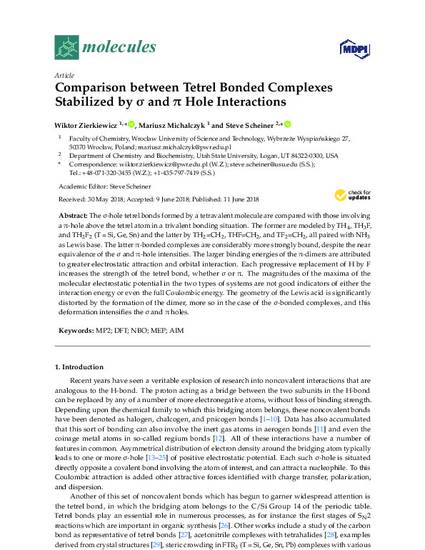
The σ-hole tetrel bonds formed by a tetravalent molecule are compared with those involving a π-hole above the tetrel atom in a trivalent bonding situation. The former are modeled by TH4, TH3F, and TH2F2 (T = Si, Ge, Sn) and the latter by TH2=CH2, THF=CH2, and TF2=CH2, all paired with NH3 as Lewis base. The latter π-bonded complexes are considerably more strongly bound, despite the near equivalence of the σ and π-hole intensities. The larger binding energies of the π-dimers are attributed to greater electrostatic attraction and orbital interaction. Each progressive replacement of H by F increases the strength of the tetrel bond, whether σ or π. The magnitudes of the maxima of the molecular electrostatic potential in the two types of systems are not good indicators of either the interaction energy or even the full Coulombic energy. The geometry of the Lewis acid is significantly distorted by the formation of the dimer, more so in the case of the σ-bonded complexes, and this deformation intensifies the σ and π holes.
